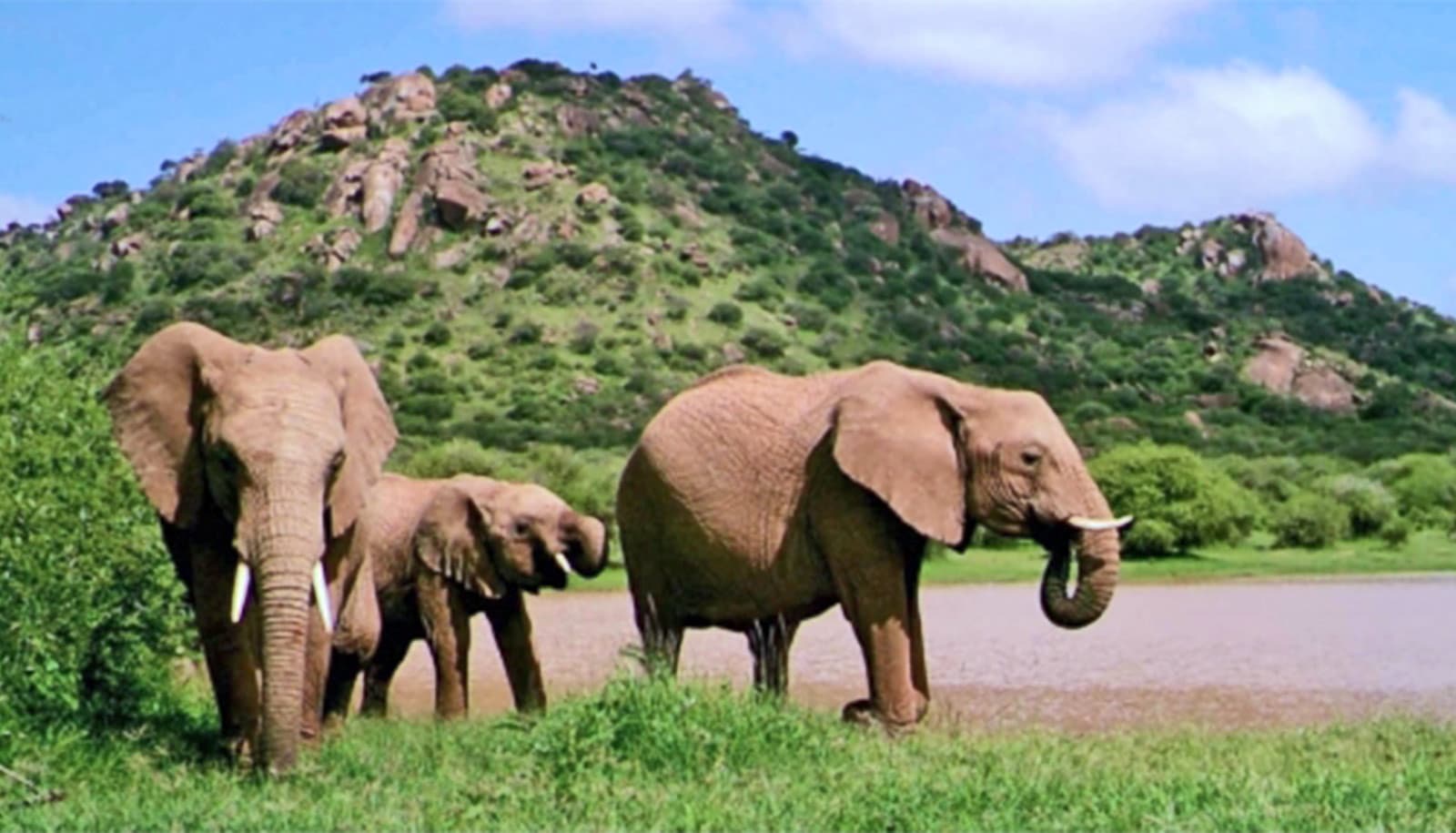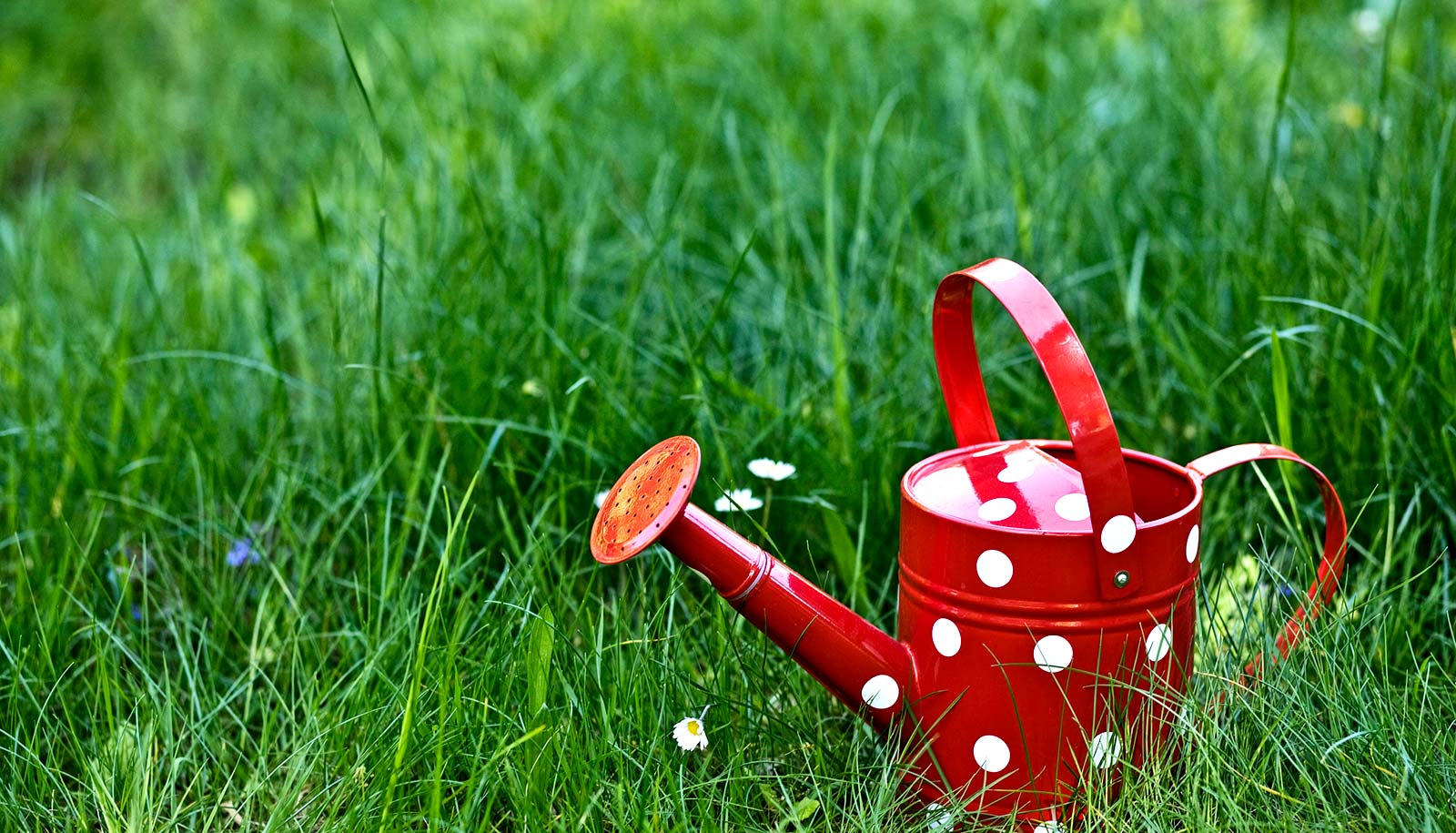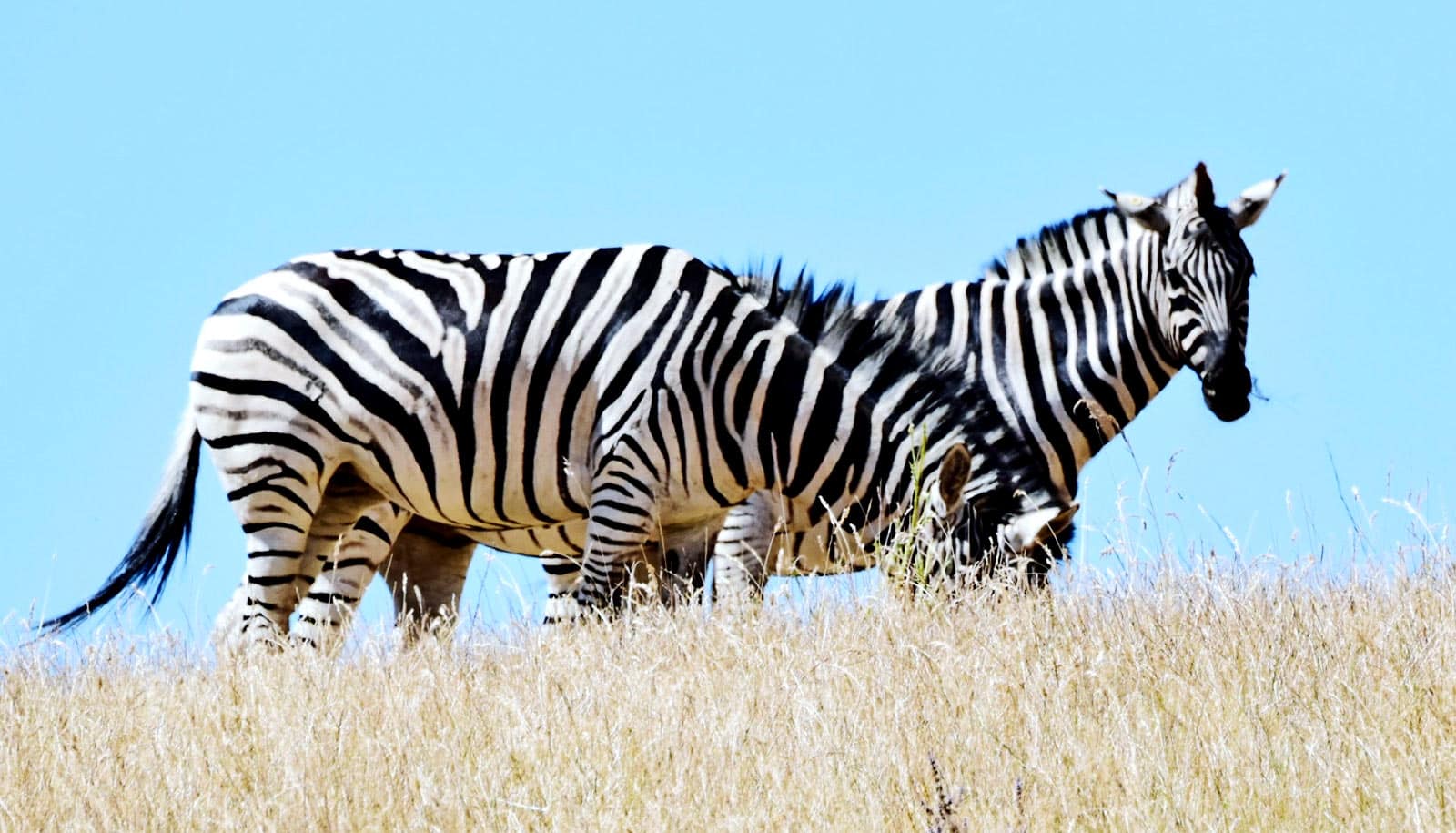Plants need water to grow. So if there’s water, shouldn’t there be more plants? A study of what happens around watering holes in Kenya suggest it’s more complicated than that.
“You might think that water sources in arid locations have more plants,” says lead author Georgia Titcomb, a postdoctoral researcher at the University of California, Santa Barbara.
“We found that, in really arid locations, herbivores come for water, and trample and eat the plants, so there is a lot more bare ground or very well adapted grazing lawn grasses.” But that’s not the case everywhere on the savanna.

Make way for elephants
For the study, published in Ecological Applications, researchers gathered data on watering hole communities over the course of two years to investigate how herbivore activity affects vegetation on the savannas of central Kenya and discovered the effects depend a lot on environmental conditions.
Titcomb is actually a disease ecologist interested in the transmission of parasites and pathogens among wildlife and domestic animals. She was curious how water sources could aggregate animals in ways that promote disease transmission.
She concluded that a key step in understanding this was to characterize the plant communities around water sources, as plants are an important vector for many parasites as well as a crucial resource for the animals themselves.
After some preliminary analysis, Titcomb realized that this research would augment previous herbivore and plant ecology studies conducted in the area.
The team surveyed 17 pairs of sites a total of four times each over the course of two years. They paired each water source with a control site 1 kilometer (.6 miles) away that had analogous environmental conditions. The researchers tallied vegetation diversity and height around the watering holes and at the control sites and identified herbivore activity based on dung. They also characterized the nutrients and physical composition of soil from each site.
Fieldwork around the watering holes presented a number of challenges. For example, the researchers had to accommodate the wildlife.
“We had to stop work when elephants came along, for example, and let them drink from the watering hole,” Titcomb recalls. “It was like, ‘alright everyone, leave the transect line, go get in the car and wait.'”
Which plants survive?
The authors found the effect of herbivores on the plant communities around these water sources differed depending on the context. Under favorable conditions for plants, the diversity of plants increased in proximity to water. This is likely because herbivores kept species in check that would otherwise dominate the area. This enabled other plant species to gain a foothold, even if the animals did eat more vegetation in the area overall.
Meanwhile, under more arid conditions, increased herbivore activity around water led to fewer plants and plant species. Titcomb suspects this is because there simply aren’t enough resources for plants to be as resilient in these areas.
Only the hardiest species were capable of withstanding these conditions and pressures. Generally, these were important grasses that formed grazing lawns frequented by wildlife and livestock alike.
Hanging out at the watering hole
The findings built on previous research on these water sources, which has often been conducted in even more arid regions of the savanna, Titcomb says. Prior studies generally found that the areas around water sources were denuded of plants with depleted plant diversity.
The new paper extends those findings, showing that these plant communities exist along a spectrum based on environmental conditions in the area.
Due to the nature of the fieldwork, there were a number of related factors the authors couldn’t untangle in this study. Water collects in particular places, influencing soil composition, nutrients, and drainage, which all also affect plant growth. Water also attracts herbivores, which in turn affect plant survival when they feed or trample on them. All of these dynamics are tied together.
Sussing out the independent contributions of each of these factors would require controlled experiments. Nevertheless, the authors feel this study is an important first step in understanding these systems.
“This work offers critical insight into how changing patterns of animal movement and aggregation—such as the gathering of animals at watering holes—can change entire communities and ecosystems,” says coauthor Hillary Young, an ecology professor.
“However, it also shows that these changes are hard to predict, and the size and even the direction of the effect can change based on the local environmental conditions, especially the climate.”
“Humans are changing every part of our environment,” Titcomb adds. “We’re re-sculpting the landscape, and so having some knowledge of those effects on plant communities will be important when thinking about management of wildlife and domestic animals.”
Humans are not only changing the physical environment, we’re also changing the composition of herbivores that live in these spaces, Titcomb points out. For many areas, mixed use—such as cattle grazing and conservation—is the only viable way to support and protect wildlife and the landscapes they live in.
It can be very challenging to maintain a wildlife conservancy without additional income, Titcomb says. These findings can inform efforts to manage wildlife alongside livestock.
“Work like this—which considers both changes in environmental conditions and animal movement—will be critical to understanding and managing ecosystems in this era of global change,” Young says.
Additional coauthors are from Mpala Research Centre in Laikipia, Kenya and UC Santa Barbara.
Source: UC Santa Barbara


